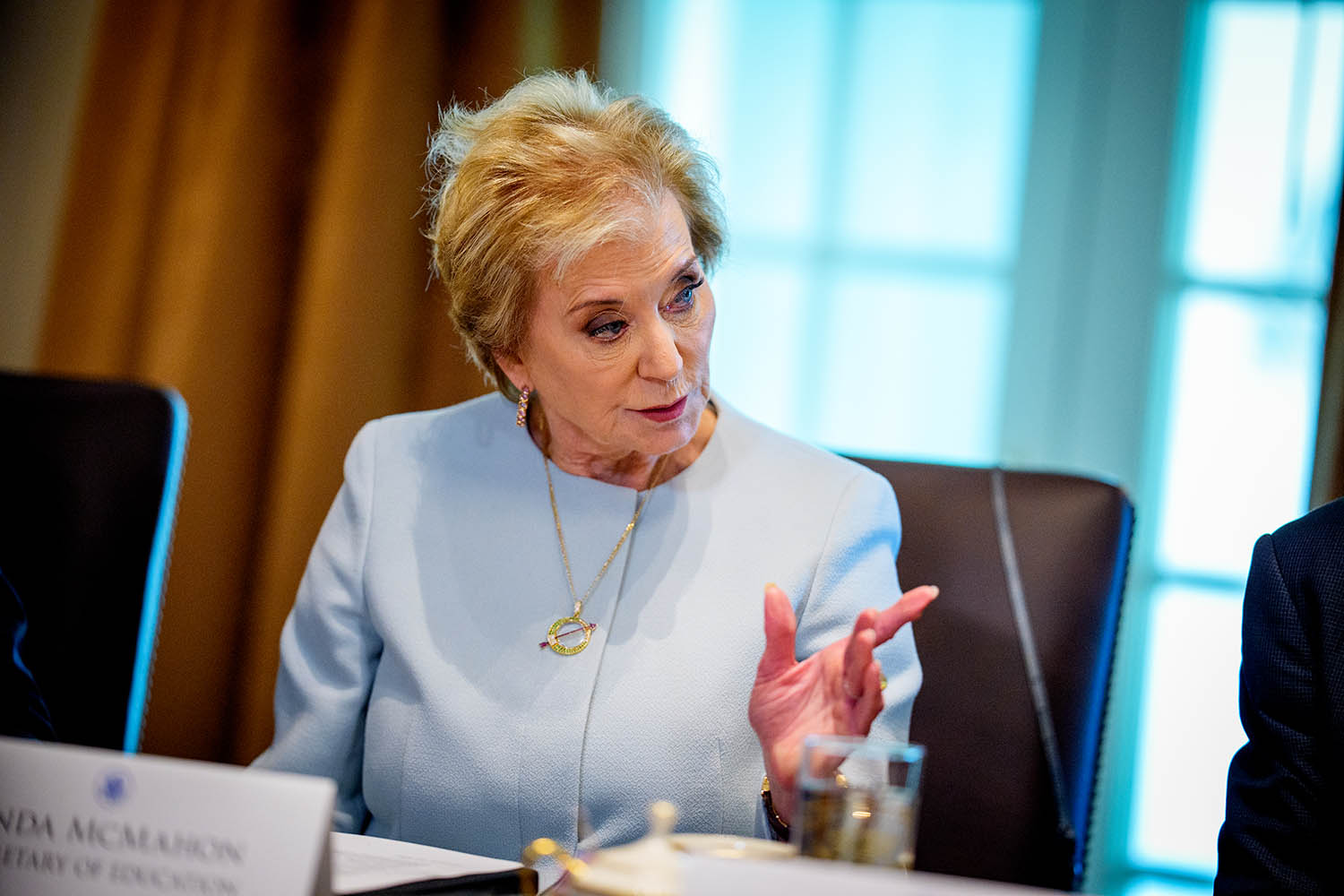By COLLIN BINKLEY AP Education Writer
WASHINGTON (AP) — The Trump administration is releasing billions of dollars in withheld grants for schools, the Education Department said Friday, ending weeks of uncertainty for educators around the country who rely on the money for English language instruction, adult literacy, and other programs.
President Donald Trump’s administration had suspended more than $6 billion in funding on July 1, as part of a review to ensure spending aligned with the White House’s priorities.
The funding freeze had been challenged by several lawsuits as educators, Congress members from both parties and others called for the administration to release the money. Congress had appropriated the money in a bill signed this year by Trump.
Last week, the Education Department said it would release $1.3 billion of the money for after-school and summer programming. Without the money, school districts and nonprofits such as the YMCA and Boys and Girls Club of America had said they would have to close or scale back educational offerings this fall.
The Office of Management and Budget had completed its review of the programs and will begin sending the money to states next week, the Education Department said.
Republican senators pressed the Trump administration to release the money
A group of 10 Republican senators on July 16 sent a letter imploring the administration to allow the frozen education money to be sent to states, saying the withheld money supported programs and services that are critical to local communities.
“The programs are ones that enjoy longstanding, bipartisan support,” U.S. Sen. Shelley Moore Capito, R-W.Va., said Friday. She pointed to after-school and summer programs that allow parents to work while their children learn and classes that help adults gain new skills — contributing to local economies.
In withholding the funds, the Office of Management and Budget had said some of the programs supported a “ radical leftwing agenda. ”
“We share your concern,” the GOP senators had written. “However, we do not believe that is happening with these funds.”
School superintendents had warned they would have to eliminate academic services without the money. On Friday, AASA, an association of superintendents, thanked members of Congress for pressing to release the money.
Grants supported camps and other programs for working families
In Harford County, Maryland, some of the withheld federal money made up more than half the budget for the district’s annual summer camp for kids learning English. The money helps the district hire certified teachers to staff the camp, incorporating learning into children’s play for four weeks during the summer. The program helps kids keep their English and academic momentum over the summer.
The district serves roughly 1,100 students who are non-native English speakers. Many of them are born in the U.S. to parents who came to the area seeking job opportunities, often in the restaurants and warehouses that have popped up in the past decades in the region northeast of Baltimore. During the school year, the soon-to-be-released federal money pays for tutors for kids learning English.
On Thursday, more than 350 children filled the second floor of Bel Air High School for the second-to-last day of summer camp. Young learners crowded around an alphabet wheel, jostling with each other to push each letter button as they thought of foods starting with letters from A to Z.
Middle school students watched a robotics team demonstration, and a few sheepishly raised their hands when asked if they would be interested in joining. High school student volunteers, some of whom had been campers learning English themselves not many years ago, helped the youngest children with art projects.
The uncertainty around the funding was an unnecessary distraction for schools, said U.S. Sen. Patty Murray, D-Wa.
“Instead of spending the last many weeks figuring out how to improve after-school options and get our kids’ reading and math scores up, because of President Trump, communities across the country have been forced to spend their time cutting back on tutoring options and sorting out how many teachers they will have to lay off,” Murray said.
The grants that were under review included $2 billion for teachers’ professional development and efforts to reduce class size; $1 billion for academic enrichment grants, often used for science and math education and accelerated learning; $890 million for students who are learning English; $376 million to educate the children of migrant workers; and $715 million to teach adults how to read.
It added up to millions of dollars for the nation’s largest school districts. Data available from the Census for three of the grant programs — teacher development, academic enrichment, and bilingual education — shows the Los Angeles Unified School District, for example, received $62 million in the 2022-23 school year. Philadelphia’s school district got $28 million, while Miami’s got over $24 million.
Smaller districts got more modest amounts, but they still would have represented sizable gaps in their budgets. For example, schools in Burlington, Vermont; Pine Bluff, Arkansas; and Norristown, Pennsylvania, each got more than $300 per student from the same three grant programs.
___
Associated Press writer Sharon Lurye in Philadelphia contributed to this report.
___
The Associated Press’ education coverage receives financial support from multiple private foundations. AP is solely responsible for all content. Find AP’s standards for working with philanthropies, a list of supporters and funded coverage areas at AP.org.
